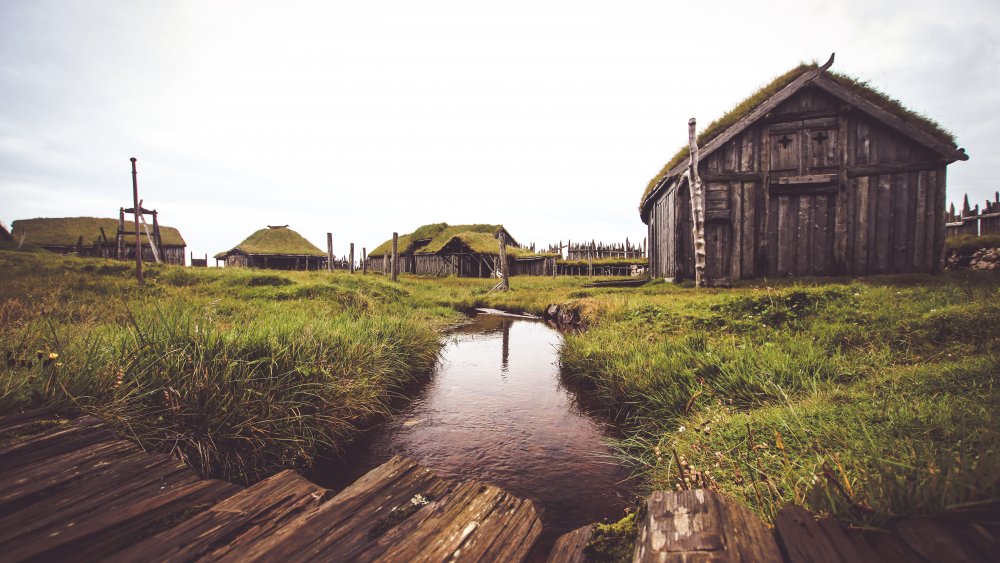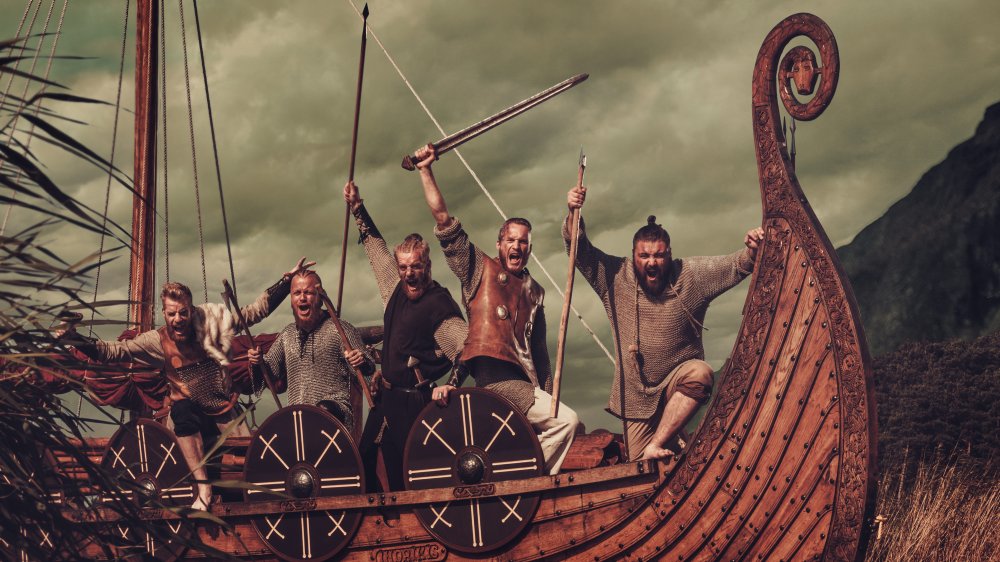This Village From Vikings Is A Lie
The final episodes of Vikings are set to air later in 2020. Since Netflix made a deal for a sequel series called Vikings: Valhalla, according to Deadline, we will have more blood and lust to look out for. Until then, however, we can content ourselves as fans by picking over the details of the show's production, specifically in this case, its main location: Kattegat.
In Vikings, Kattegat serves as the seat of Ragnar Lothbrok, the series' protagonist, and as a mirror for his rise in power, growing from a market town to the seat of the kingdom's power. It is a central point in the story, the base from which the raids set out and the home and hearth to which they return afterwards.
Yet, unlike Norsemen, yet another Netflix produced show about Vikings, Vikings is not filmed in southern Norway. Rather, per Atlas of Wonders, it's filmed all over the place, from Iceland to England to Morocco. Kattegat itself was constructed on the banks of Lough Tay, a private lake in scenically rural Ireland. Later on, the shooting was moved to Ashford Studios, which also lay in County Wicklow.
Kattegat found
The trick Vikings seeks to pull off is to meld a reasonably realistic version of Viking history with elements found in the sagas to create a grounded, if imaginary setting. So, perhaps it shouldn't surprise us when we learn that there is no Kattegat.
But, then what is a Kattegat? Kattegat means "cat's throat" in Danish and refers to the narrow straits between eastern Jutland and western Sweden. It's the body of water that connects the North sea to the Baltic. In fact, until 1784, it was the only way to move by sea between the two, which gave the area a considerable amount of control over trade. Perhaps naming the town belonging to a legendary Viking after the main path of navigation was a gesture to its importance. Or perhaps not.
Besides being a trading route, Kattegat is now well known for being an ecological dead zone, which Scientific American reports is a large body of water that lacks the needed amount of oxygen to support marine life. These usually result from heavy manmade pollution, and studies have shown that these trends are reversible. So, perhaps we can return to the Kattegat Ragnar Lothbrok might have know. Or, again, perhaps not.

